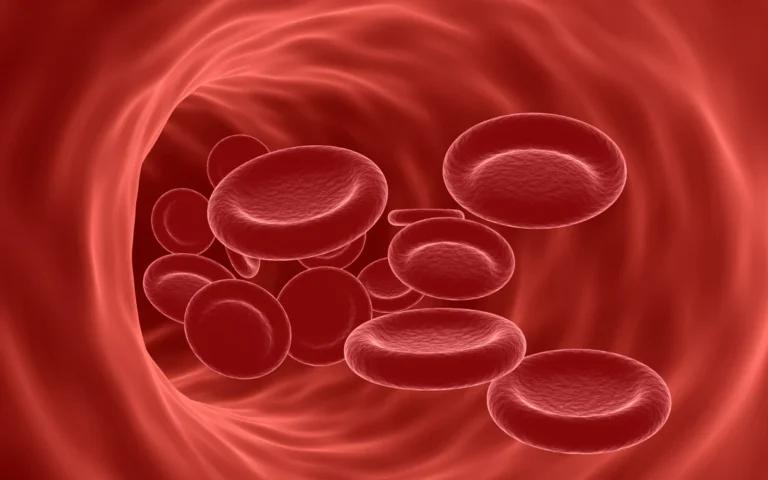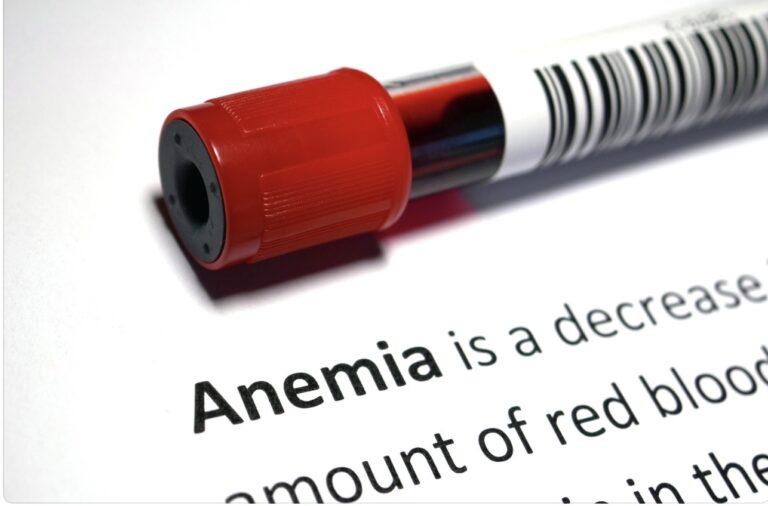Sickle cell anaemia, also known as Sickle Cell Disease (SCD), is an inherited blood disorder that significantly impacts the lives of millions worldwide. It is characterised by abnormal haemoglobin and distorted red blood cells that are sickle-shaped. These sickle-shaped cells pass through blood vessels and can get stuck and block blood flow causing the symptoms of sickle cell disease. Understanding the underlying causes of sickle cell disease (SCD) is important for developing effective treatments and preventive strategies. Let’s take a look at what sickle cell anemia is and the genetics behind this disorder.
The genetic basis of sickle cell anemia
At the heart of sickle cell anemia lies a genetic mutation in the hemoglobin gene, HBB. This gene is responsible for providing the instructions to produce hemoglobin, which is essential for the proper functioning of red blood cells. In individuals with sickle cell anemia, a single nucleotide substitution within the HBB gene results in the production of an abnormal form of hemoglobin, known as hemoglobin S (HbS).
The role of hemoglobin
Hemoglobin is a vital component of red blood cells, responsible for carrying oxygen from the lungs to the body’s tissues. In a healthy individual, the hemoglobin molecules are flexible and disc-shaped, allowing them to easily navigate through the complex network of blood vessels. However, in sickle cell anemia, HbS causes the red blood cells to change into a rigid, crescent or “sickle” shape.
The sickle-shaped cells
These sickle-shaped red blood cells, unlike normal red blood cells are unable to deliver oxygen to the body’s tissues. They also have a shorter lifespan, typically lasting only 10-20 days compared to the normal 90-120 days. As a result, individuals with sickle cell anemia often experience chronic anaemia, a condition characterised by a persistent shortage of healthy red blood cells.
Inheritance patterns of sickle cell anemia
Sickle cell anemia is an autosomal recessive genetic disorder, meaning that an individual must inherit two copies of the mutated HBB gene, one from each parent, to develop the disease. This inheritance pattern is crucial in understanding the risk factors and familial patterns associated with sickle cell anemia.
Parental carrier status
If both parents are carriers of the sickle cell gene, each of their children has a 25% chance of inheriting the disease, a 50% chance of inheriting the sickle cell trait, and a 25% chance of inheriting two normal hemoglobin genes. On the other hand, if one parent has sickle cell disease and the other is a carrier, each of their children has a 50% chance of inheriting the disease and a 50% chance of inheriting the sickle cell trait.
Sickle cell trait
Individuals who inherit one copy of the sickle cell gene and one normal hemoglobin gene are considered to have the sickle cell trait. While they do not develop the full-blown disease, they can still pass the sickle cell gene to their offspring. Sickle cell trait is relatively common, affecting approximately 1 in 12 African Americans and 1 in 100 Hispanic Americans.
Prevalence and risk factors
Sickle cell anemia is most common in populations with a history of malaria, as the sickle cell trait can provide a degree of protection against the disease. Consequently, the highest rates of sickle cell anemia is observed in regions of Africa, the Middle East, and the Mediterranean.
Global distribution
In the United States, sickle cell anemia is most commonly seen in individuals of African descent, affecting around 1 in 365 Black or African American births. It also occurs in Hispanic Americans but at a lower rate of 1 in 16,300 births. The prevalence of sickle cell trait in the U.S. is estimated to be around 1 in 12 for individuals of African descent and 1 in 100 for Hispanic Americans.
Genetic predisposition
Certain ethnic and racial groups are at a higher risk of developing sickle cell anemia due to their genetic makeup. In addition to those of African, Mediterranean, and Middle Eastern descent, the disease can also affect those with ancestry from South America, the Caribbean, and parts of Asia.
Sickle cell trait vs. Sickle cell disease
It is important to distinguish between sickle cell trait and sickle cell disease, as they have distinct implications for an individual’s health and genetic inheritance.
Sickle cell trait
Individuals with sickle cell trait carry a single copy of the mutated HBB gene and one normal hemoglobin gene. They typically do not show the symptoms associated with sickle cell disease and are generally healthy. However, under certain conditions, such as severe dehydration or intense physical exertion, they may experience complications related to their sickle cell trait.
Sickle cell disease
Sickle cell disease refers to the condition where an individual inherits two copies of the mutated HBB gene, one from each parent. These individuals produce predominantly HbS, leading to the sickle-shaped red blood cells and the health complications.
Types of sickle cell disease
There are several distinct types of sickle cell disease, each with its own genetic profile and clinical manifestations.
Hemoglobin SS (HbSS)
This is the most severe form of sickle cell disease, affecting approximately 65% of individuals with the condition. Individuals with HbSS inherit two copies of the hemoglobin S gene, resulting in a high proportion of abnormal hemoglobin and the most severe symptoms.
Hemoglobin SC (HbSC)
HbSC is a milder form of sickle cell disease, affecting around 25% of individuals with the condition. In this case, the individual inherits one copy of the hemoglobin S gene and one copy of another abnormal hemoglobin gene, known as hemoglobin C.
Hemoglobin Sβ Thalassemia
Individuals with this form of sickle cell disease inherit one copy of the hemoglobin S gene and one copy of a gene that causes beta-thalassemia, another inherited blood disorder. There are two subtypes of this condition: Hemoglobin Sβ+ thalassemia, which is milder, and Hemoglobin Sβ0 thalassemia, which is more severe.
Symptoms of sickle cell disease
- Shortness of breath
- Chronic pain episodes
- Jaundice (yellowing of the skin)
- Priapism (painful, persistent erections)
- Leg ulcers
Complications of sickle cell disease
- Organ damage
- Pulmonary hypertension (high blood pressure in the lungs)
- Acute chest syndrome (blockage of capillaries in the lungs or infection)
Treatment options
- Vaccinations
- Antibiotics
- Antimetabolites such hydroxyurea
- Blood transfusions
- Bone marrow transplant (stem cell transplant)
New therapies like gene therapy may have promise for the future.
Genetic screening and counselling
Given the hereditary nature of sickle cell anemia, genetic screening and counselling play a crucial role in identifying carriers, managing the condition, and preventing the birth of affected children.
Newborn screening
In many countries, including the United States, newborn screening for sickle cell disease is a standard practice. This screening involves a simple blood test that can detect the presence of the sickle cell gene, allowing for early diagnosis and the prompt initiation of appropriate medical care.
Prenatal testing
Prenatal testing, such as chorionic villus sampling or amniocentesis, can be performed during pregnancy to determine the genetic status of the fetus. This information is invaluable for couples who are at risk of having a child with sickle cell disease, as it allows them to make informed decisions about their pregnancy and prepare for the management of the condition.
Genetic counselling
Genetic counselling is recommended for individuals and couples who are carriers of the sickle cell gene or have a family history of the disease. Counsellors can provide guidance on the inheritance patterns, the risks of passing the disease to offspring, and the available options for family planning and disease management.
Conclusion
The genetic roots of sickle cell anemia are deeply linked with the history, culture, and health of populations around the world. By understanding inheritance patterns and the underlying genetic mechanisms, we can better understand the challenges posed by this disorder. Through continued research, advancements in genetic screening, and comprehensive healthcare strategies, we can look forward to alleviating the burden of sickle cell anemia and provide hope for those affected by this condition.
Sources
- Sickle cell anemia – Symptoms & causes – Mayo Clinic
- Sickle Cell Disease – Causes and Risk Factors – NHLBI NIH
- Sickle Cell Disease (SCD): Types, Symptoms & Causes
- Sickle cell disease – Causes – NHS
Medical Disclaimer
NowPatient has taken all reasonable steps to ensure that all material is factually accurate, complete, and current. However, the knowledge and experience of a qualified healthcare professional should always be sought after instead of using the information on this page. Before taking any drug, you should always speak to your doctor or another qualified healthcare provider.
The information provided here about medications is subject to change and is not meant to include all uses, precautions, warnings, directions, drug interactions, allergic reactions, or negative effects. The absence of warnings or other information for a particular medication does not imply that the medication or medication combination is appropriate for all patients or for all possible purposes.






